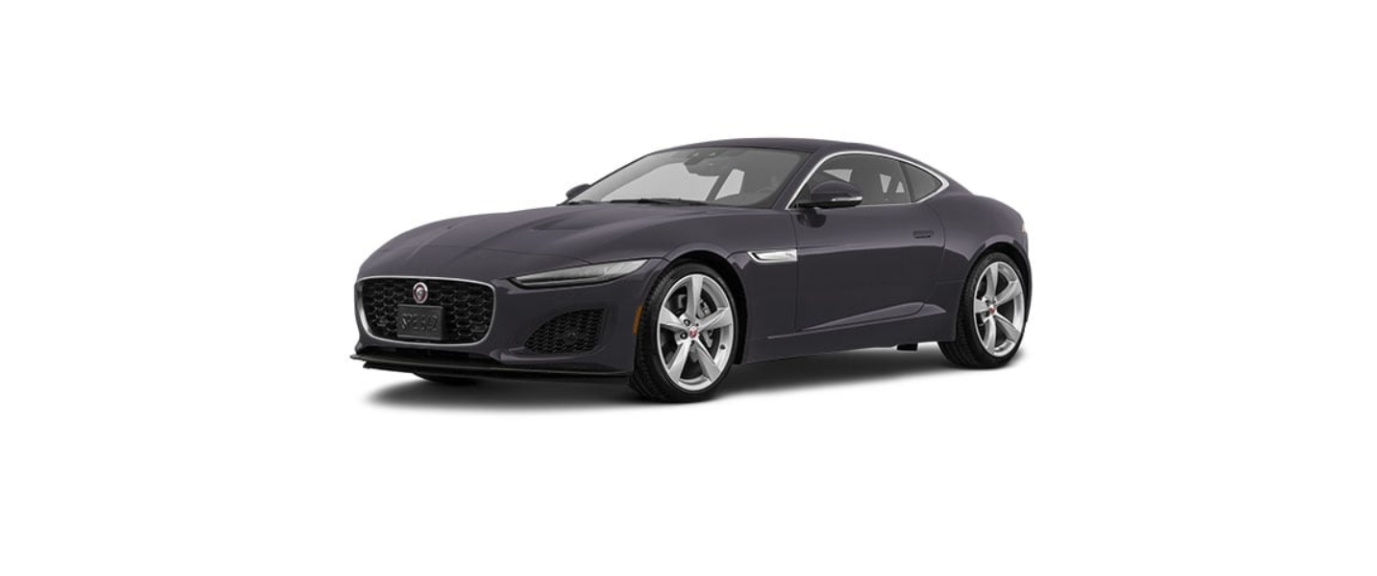2022 Jaguar F-TYPE Vehicle Cleaning Owners Manual




2022 Jaguar F-TYPE Vehicle Cleaning


REPAIRING MINOR PAINT DAMAGE
Regularly inspect the paintwork for damage. Any stone chips, fractures, or deep scratches, in the paint/bodywork, should be repaired promptly. Bare metal will corrode quickly, and if left untreated can result in expensive repairs.
ALLOY WHEELS
Only use approved wheel cleaning products.
THE EXTERIOR
Make sure the tailpipe is cool before polishing the tailpipe finishers. Failure to do so may result in personal injury.
To prevent damage to your vehicle when using a valeting service, make sure to advise them of the cleaning instructions contained within the Owner’s handbook.
Make sure the spoiler mechanism and drainage holes are kept clean and free of debris.
Never use cleaning products that are not approved for use on vehicles.
Make sure that you read and comply with all warnings and product instructions supplied with any cleaning products.
Some high-pressure cleaning systems are sufficiently powerful to penetrate door and window seals, and damage trim, door locks, and door handle. Never aim the water jet directly at the engine air intake, heater air intakes, body seals, or any components which may be damaged.
Do not use a power wash system in the engine bay area, or directed at door handles, as it may cause damage.
Some high-pressure cleaning systems are sufficiently powerful to damage the wheels and brake system. Never aim a water jet directly at the wheels or brakes.
After washing the vehicle, it is recommended to use a suitable metal polish on stainless steel or chrome finishers to restore the surface appearance.\
Convertible roof:
- Do not aim the water jet directly at any rubber gaiters or seals on suspension joints.
- Make sure that the water jet nozzle is more than 12 inches (300 mm) away from vehicle components.
- Do not leave the convertible roof in the open (folded) position for longer than is necessary, as in certain circumstances, permanent soiling along the folds may occur.
- Cleaning: Every 1 000 miles (1 600 km) vacuum clean and wash the convertible roof. Your retailer/authorized repairer will be able to recommend suitable products.
- Reproofing: Every 5 000 miles (8 000 km) reproof the convertible roof material. Your retailer/authorized repairer will be able to recommend suitable products.
The vehicle manufacturer recommends the use of specialized satin paint products when cleaning the vehicle’s exterior. Any other cleaning or paint protection product may have an adverse effect on the paint finish.
Never polish vehicles that have a satin matte paint finish. Polishing causes the finish to shine and may reduce the matte effect.
Do not use an automated car wash.
Stickers, films, magnetic plates, or similar should not be affixed to the vehicle’s exterior. Additional care is required when cleaning the exterior of vehicles with a satin matte paint finish. It is recommended to wash the vehicle by hand, using a soft sponge and making sure not to apply high pressure to the paint surface. Avoid washing the vehicle in direct sunlight.
Remove any of the following substances immediately, where possible:
- Insect remains.
- Bird droppings.
- Fingerprints.
- Tree resin.
- Oils, grease, and fuels.
- Wax.
- Tar spots.
DEPLOYABLE REAR SPOILER CLEANING MODE (COUPE ONLY)
To manually deploy the rear spoiler for cleaning, make sure that:
- The vehicle is stationary.
- The Electric Parking Brake (EPB) is applied.
- Park (P) is selected.
- The tailgate is fully closed.
- The engine is not running.
- The ignition system is switched on, or the ignition system has not been switched off for more than 15 seconds.
Press the rear spoiler button to manually deploy the spoiler. The button’s LED illuminates to confirm manual deployment has been selected. See DEPLOYABLE REAR SPOILER.
The instrument panel displays the message SPOILER IN CLEANING MODE.
Press and hold the rear spoiler button to return to automatic mode. The button’s LED extinguishes.
If the vehicle is driven while in cleaning mode, the rear spoiler automatically retracts when the vehicle’s speed is greater than 1.3 mph (2 km/h).
PAINTWORK
Substances that are corrosive can damage the vehicle’s paintwork. Any such deposits should be removed as soon as possible to prevent damage.
USING AN AUTOMATIC WASH
Make sure the Deployable Rear Spoiler (DRS) is fully retracted before using a car wash or a pressure washer. See DEPLOYABLE REAR SPOILER.
To prevent damage to vehicles fitted with a fixed rear spoiler or R vehicles, do not use an automatic car wash.
Make sure that the wipers are switched off before entering a car wash. If the rain-sensitive wipers operate during the car washing process, damage may occur to the wiper mechanism. See WIPER OPERATION.
Commercially operated, automatic car washes, jet washes, and power-operated mops are not recommended, especially with the door handles in the deployed position. Using such cleaning equipment can cause damage to the vehicle.
Regular use of automatic car washes tends to dull the luster of the paintwork. After leaving the car wash, switch on the windshield wipers immediately, to remove water and prevent a build-up of wax.
ENGINE COMPARTMENT
Do not use a high-pressure washer or steam cleaner in the engine compartment.
Make sure that the brake fluid reservoir is kept dry at all times. Only use a clean, dry cloth to clean the brake fluid cap and reservoir.
GLASS SURFACES
Clean the rear window with a soft cloth to avoid damaging the heating element. Do not scrape the glass or use any abrasive cleaning fluid. Mirror glass is particularly susceptible to damage. Wash with soapy water. Do not use abrasive cleaning compounds or metal scrapers to remove ice.
REAR WINDOW
To avoid damaging the heating elements when cleaning the inside of the rear glass, use only a soft, damp cloth or chamois leather. Do not use solvents or sharp objects to clean the glass.
REMOVING GREASE AND TAR
Remove grease or tar with Jaguar Tar Remover or methylated spirit (alcohol). White spirit is also effective, but must not be applied to rubber, particularly the windshield wiper blades.
Make sure that after using methylated or white spirit, the area is washed immediately with soapy water, to remove all traces of spirit.
POLISHING
Chrome polish, or other abrasive cleaners, must not be used on the vehicle’s brightwork. It is recommended that the vehicle is polished regularly using Jaguar polish and a polishing cloth.
THE INTERIOR
Some cleaning products contain substances that are harmful and can cause health problems if used incorrectly.
Some cleaning products may cause damage to the vehicle’s interior. Make sure to read the cleaning product’s instructions carefully. If in any doubt as to which products to use, consult a retailer/authorized repairer.
Do not use chemical agents, solvents, or domestic cleaning products. Using unapproved cleaning products may damage the vehicle.
To prevent damage to the vehicle when using a detailing service, make sure to advise of the cleaning instructions contained within the Owner’s Handbook.
Unless spillages, such as tea, coffee, or ink, are washed away immediately, permanent staining may have to be accepted.
When cleaning, do not allow sharp or abrasive objects to make contact with the components. Sharp or abrasive objects may damage the components.
Use a soft, dry, lint-free cloth when cleaning switches or controls. Do not apply excessive pressure when doing so. Excessive pressure can damage vehicle components.
Do not spray liquids directly onto the surface of switches and controls. Fluids leaking into the gaps around switches and controls can damage the electronics of the vehicle.
- Take care when cleaning high gloss surfaces as they are prone to scratching. It is recommended to use a clean microfiber cloth in small circular motions, making sure a fresh section of clean cloth is used regularly.
- To prevent ingrained dirt and staining, inspect the interior regularly and clean every 1 to 2 months.
- It is recommended to vacuum interior surfaces with a soft brush head attachment before using cleaning products.
CLEANING SWITCHES AND CONTROLS
Use a soft, dry, lint-free cloth when cleaning switches or controls. Do not apply excessive pressure when doing so. Excessive pressure could cause a component malfunction or even lead to a complete failure.
Do not spray liquids directly onto the surface of switches and controls. Liquids leaking into the gaps around switches and controls can damage the electronics of the vehicle.
Do not use chemical agents, solvents, or domestic cleaning products. Using unapproved cleaning products may damage the vehicle.
When cleaning, do not allow sharp or abrasive objects to make contact with the components. Sharp or abrasive objects may damage the components.
FABRIC UPHOLSTERY
Never use soap, ammonia, bleach, or other cleaners intended for use on hard surfaces. Using unapproved cleaning products may damage the upholstery fabrics.
Do not use upholstery cleaner on electrical equipment such as dashboard switches. Doing so may damage the electrical equipment.
Some materials and fabrics are prone to dye transfer from colored clothing e.g., jeans, which can cause unsightly discoloration of lighter colored materials and fabrics. Affected areas should be cleaned as soon as possible. Most stains on fabrics can be removed if treatment is carried out immediately before the stain has a chance to dry in. Specific products for use on interior fabrics are recommended for cleaning fabric upholstery, however, dry cleaning fluid or clean water can also be used.
To clean fabric upholstery:
- Wipe with a clean, soft, lint-free cloth or vacuum up the majority of the debris.
- Follow the instructions for the chosen upholstery cleaning product. Avoid over-wetting.
- If staining persists, agitate the surface with a firm sponge or soft brush containing the chosen cleaning product. Dry the surface by wiping it with a clean microfiber cloth.
To avoid watermarks clean the entire section of fabric containing the stain.
LEATHER UPHOLSTERY
Only use cleaning products specifically designed for use on leather. Do not use chemical, alcohol, or abrasive materials, as doing so will cause rapid deterioration of the leather. The use of non-approved products will invalidate the warranty.
If in any doubt as to which products to use, consult a retailer/authorized repairer. Using the wrong product can cause damage to the leather surfaces.
Dark clothing may stain leather seats, just like other upholstery products.
Sharp objects, such as belts, zippers, rivets, etc., can leave permanent scratches and scratch marks on the leather surface. To prevent ingrained dirt and staining clean the seat upholstery every 1 to 2 months, dealing with stains immediately.
To clean leather upholstery:
- Wipe off fine dust from the seat surfaces using a clean, damp, non-colored cloth or vacuum with a soft brush head attachment. Avoid over-wetting the leather.
- If this is not sufficient, use a cloth that has been dampened with warm, soapy water and then wrung out. Use only mild, non-caustic soap. Alternatively, use an interior upholstery wipe.
- Use the vehicle manufacturer’s leather cleaner for heavily soiled areas. Dry off and rub with a clean, soft cloth. Make sure to change the cloth surface regularly.
- Use the vehicle manufacturer’s leather cleaner several times a year to maintain the leather’s suppleness and appearance. The cleaner nourishes and moisturizes the leather, and helps to improve the surface’s protective film against dust and substances.
SEAT BELTS
Do not allow any water, cleaning products, or fabric from clothes to enter the seat belt mechanism. Any substance which enters the mechanism may affect the performance of the seat belt in an impact. Damage to the seat belt can greatly reduce its effectiveness in reducing the risk of serious injury or death in the event of an accident. Extend the seat belts fully. Specific products for use on interior fabrics are recommended, follow the product instructions. Alternatively, use warm water and a non-detergent soap to clean. Allow the seat belts to dry naturally while fully extended.
While cleaning the seat belt, take the opportunity to examine the webbing for damage/wear. Any wear or damage should be reported to, and rectified by a retailer/authorized repairer.
CLEANING SCREENS AND DISPLAYS
Do not polish the Instrument panel. Polished surfaces are reflective, and may interfere with the driver’s view. Driving with an obstructed view may result in accidents causing serious injury or death.
Do not use fluids on electrical equipment such as switches and screens. Fluids can leak into any gaps around the components or between panels or trim and cause damage to components.
Do not use upholstery cleaner on electrical equipment such as dashboard switches. Certain products may damage the vehicle’s electrical equipment.
Clean the vehicle’s screens and displays as follows:
- Do not use chemical agents or domestic cleaners.
- Do not allow sharp, hard, or abrasive objects to make contact with the screens.
- Avoid exposing screens to direct sunlight for long periods.
- To prevent errors from occurring, make sure only one finger at a time is in contact with the touch screen.
- Do not use excessive pressure.
WIPER BLADES
To avoid damage to the wiper blade, do not lift the wiper by the wiper blade. Always lift the wiper by the wiper arm. Not doing so may result in damage to the wiper blade.
Do not use excessive pressure. Excessive pressure on the wiper blades can damage the blades.
Heavy contamination on the wiper blades should be removed, using a soft, damp sponge or cloth.
CARPET AND MATS
Correctly secure the floor mats before driving. Never placemats on top of each other. Unsecured or incorrectly positioned mats can obstruct the brake and/or accelerator pedal.
Marks or stains can be removed by gentle scrubbing with a weak solution of soap and warm water.
For more stubborn stains, a commercially available carpet cleaner should be used.
STEERING WHEEL
Only use cleaning products that are suitable for use on steering wheels and do not produce a slippery surface. A slippery surface could cause a loss of control of the vehicle, potentially resulting in serious injury or death.
AIRBAG MODULE COVERS
Airbag covers should only be cleaned using a slightly dampened cloth and a small amount of upholstery cleaner.
Any substance which enters the mechanism can prevent the correct deployment of an airbag during an impact.
Recent Posts
VW Jetta Engine Fuse Box Diagram
Access the comprehensive 2010-2018 VW Jetta Passenger Fuse Box Diagram to troubleshoot electrical issues effectively.…
VW Jetta Passenger Fuse Box Diagram
Explore the comprehensive VW Jetta Passenger Fuse Box Diagram to troubleshoot electrical issues effectively. Understand…
2023 Ford F-150 Lightning Fuse Box Diagram
Under Hood Fuse Box Location Remove the front luggage compartment cover. Under Hood Fuse Box…
2022 Kawasaki NINJA H2 SX SE Brake Lever Adjuster Owner’s Manual
2022 Kawasaki NINJA H2 SX SE Brake Lever Adjuster Owner's Manual NOTICE Only adjust the front…
2023 Land Rover Range Rover Evoque Exiting The Vehicle Owners Manual
2023 Land Rover Range Rover Evoque Exiting The Vehicle SINGLE LOCKING WARNING Before exiting the…
2023 Land Rover Range Rover Evoque Front Seats Owners Manual
2023 Land Rover Range Rover Evoque Front Seats FRONT SEAT SAFETY Make sure to read…
